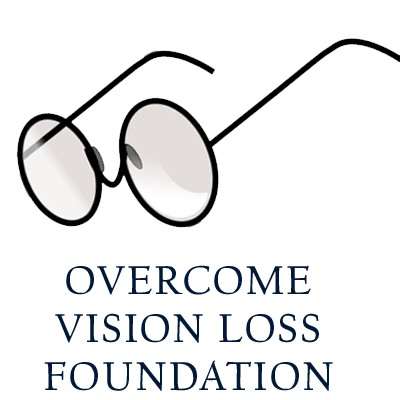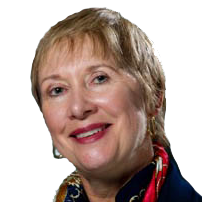Making a Treasured Painting Accessible
This edition of 3DPhotoWorks’s accessibility newsletter focuses on the powerful impact one museum had using tactile technology to help visitors who are blind experience a painting by American artist Georgia O’Keeffe. Another article discusses how museums can work with the National Federation of the Blind to make museum exhibits more accessible.
Buster Ratliff is the development officer at the Panhandle-Plains Historical Museum in Canyon, Texas, where one of the museum’s most treasured artworks was recreated in a tactile form, with sensors imbedded in the painting that revealed information as visitors explore the painting with their hands.Q. Buster, tell me about Art for Everyone, and how that initiative to make art more accessible to all museum goers, particularly people who are blind or low-vision, came to be at the Panhandle-Plains Historical Museum. The vision started with seeing the 3DPhotoWorks booth at the American Alliance of Museums convention in Washington, D.C., in 2016. When we saw it, we knew it was something we had to do.
Q. Before you could launch this initiative, Panhandle-Plains needed to raise $25,000 to fund this project. John Olson, co-founder of 3DPhotoWorks, came to talk about the importance of making art accessible to blind visitors. Tell me how that talk was received by your members. John is such an amazing speaker and knows how to connect to an audience. His talk was a hit. In fact, we raised nearly half our goal that night and that would not have happened without John.
Q. In 2018, you put on display a tactile version of Georgia O’Keeffe’s “Red Landscape” to launch Art for Everyone. Why did you choose that photo to be the first to get the tactile treatment? “Red Landscape” is one of the iconic pieces in our collection. Besides being an O’Keeffe, it is inspired by Palo Duro Canyon, which is an important piece of our region. It’s a unique painting and not one that many would associate with the O’Keeffe style. And she painted it while she was a teacher at West Texas State Normal College (now West Texas A&M University) and our museum is on the WTAMU campus. For us, it was a no-brainer.
Q. 3DPhotoWorks used its technology to produce “Red Landscape” in three-dimensional relief with imbedded sensors. When visitors run their hands over the painting, what information do they hear by activating the sensors? There are four sensors on the painting that describe the colors and look in that section of the painting. Below it there is some information about Canyon, Texas, in 1916 when the painting was painted; Dr. Amy Von Lintel, who is an art historian at WTAMU and an O’Keeffe expert, gives information about O’Keeffe; and then a reporter who interviewed her in the ’60s talks about what it was like meeting O’Keeffe. On top of that, all audio is in both English and Spanish.
Q. How did blind visitors respond to “seeing” that famous painting for the first time? What about other visitors? The response was amazing. It was especially fun watching the first blind visitors “see” art. One visitor has been coming to the museum her entire life and had paintings described to her every visit. When she responded, “I now know what you’ve been describing,” we knew we were on the right path.
Q. Will you expand Art for Everyone and use 3DPhotoWorks technology to make other paintings accessible to visitors who are blind? Yes, we will. We have been renovating galleries over the last few years and the next step for us is adding more 3D reliefs of our permanent collection. We have four paintings we want to do that are important and iconic to our collection. I believe over the next several years you will see more and more 3D reliefs in our art galleries.
Q. What advice would you give other museums who are trying to make their art and photography accessible to the blind? Do it. It is as simple as that to me. Art is something that in some form or fashion, whether people realize it or not, speaks to everyone. Everyone has a favorite painting. It could be “Red Landscape” or the “Mona Lisa” or even “Dogs Playing Poker,” but everyone has a favorite. And I am a firm believer that whether you are sighted or not, you deserve the experience of discovering your favorite.
Q. Are there other thoughts you have about accessibility in museums? This entire project has made PPHM rethink its accessibility. We are nowhere close to where we need to be but we are taking the necessary steps because we met John Olson. For us, it’s not just those who are blind or sight impaired, we have also begun tours for the deaf and that’s just a start. We have so much more to do, but we are starting to do it.
“Red Landscape” does not travel very often. However, the Witte Museum in San Antonio, Texas, did a huge art retrospective on 250 pieces of Texas Art. PPHM had 10 paintings in this show, with one being “Red Landscape.” What was amazing is not only was the actual painting a part of this extremely important exhibition, the 3D relief of “Red Landscape” was a part of the show too.
Q. Did anything surprise you about the experience? Two things surprised me about the experience. First, how naïve I was about the experience of those who are blind and sight impaired visiting a museum and how much more we as museum professionals could be doing and should be doing. The second is how sighted visitors have gravitated to the experience. We can then educate them on the importance of this 3D relief. In addition, Dr. Amy Von Lintel saw something in the 3D relief she had never seen in the actual “Red Landscape” painting and it changed her perspective on the piece. She now brings her art history students to view not only the painting, but the 3D relief.
The Life-Changing Importance of Accessible Art
Watch Video on Importance of Accessible Art
The American Alliance of Museums on "Partnering with the Blind"
3DPhotoWorks, the National Federation of the Blind and the Newseum in 2018 joined forces to open a groundbreaking exhibit, “The Marines and Tet: The Battle That Changed the Vietnam War.” It was the first photography exhibit in the United States designed for people who are blind or have low vision. In this blog post for the American Alliance of Museums, 3DPhotoWorks co-founder John Olson, Anil Lewis of the National Federation of the Blind and Newseum executive director Carrie Christoffersen discuss how museums can make their spaces accessible to visitors who are blind or visually impaired.
Read the AAM's Article on Partnering with the Blind
Get a Free Accessibility Kit from 3DPhotoWorks
This email address is being protected from spambots. You need JavaScript enabled to view it.
Find out how your museum can make photographs, art, maps and graphic images accessible to blind and low-vision visitors with a free Accessibility Resource Kit. Developed by 3DPhotoWorks in collaboration with the National Federation of the Blind, the kit includes a tactile image sample of Vincent Van Gogh’s “Portrait of Dr. Gachet,” as well as valuable resources from the NFB for making exhibits accessible for both blind and sighted visitors.
This email address is being protected from spambots. You need JavaScript enabled to view it.
Copyright © 2019 3DPhotoWorks, All rights reserved.
You are receiving this email because you opted in via our website.
Our mailing address is:
3DPhotoWorks124 Hudson AveChatham, NY 12037-1429
Making a Treasured Painting Accessible
Our Blog
 The OVLF Blog keeps up on news and developments involving those dealing with vision loss. Take a look, and if you like, leave a comment...
The OVLF Blog keeps up on news and developments involving those dealing with vision loss. Take a look, and if you like, leave a comment...
Meet The Board
 Vast experience from many different viewpoints and backgrounds make up the Overcome Vision Loss Foundation's Board Of Directors.
Vast experience from many different viewpoints and backgrounds make up the Overcome Vision Loss Foundation's Board Of Directors.





